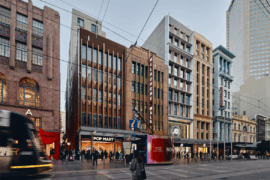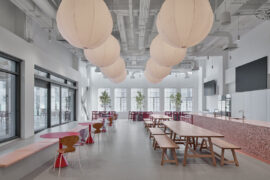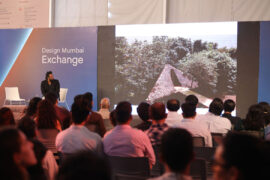Do we have to take an all-or-nothing approach when it comes to preserving our built heritage? Conservation specialist Ian Tan posits that there is a middle-ground to be found between infrastructure development and heritage protection.

Photography by Choo Yut Shing
March 3rd, 2022
The Urban Redevelopment Authority (URA) celebrated its 30th year milestone in conservation not too long ago. Results since 1989 have been remarkable. More than 7,000 buildings are accorded legal protection, amongst them 6,130 shophouses, 40 religious buildings and 30 schools, many familiar sights in the city.1 These figures are heartening, considering how other metropolises like Hong Kong trail behind with 1,444 assessed buildings, the vast majority without protection, while Kuala Lumpur has 71 gazetted building protected from destruction.
Despite URA’s efforts, there are periodic occurrences where significant landmarks had to make way for infrastructure development, sometimes lacking sufficient public consultation, and without possibility of revoking the demolition order despite the public outcries such unexpected announcements elicit. These include National Theatre in 1984, Eu Court in 1991, National Library in 2001 and the strikingly colourful Rochor Centre in 2016. A possible factor contributing to their demise, could be how they fall outside the conventional criteria of historic buildings worthy to protect.
URA’s conservation objectives established in 1993 prioritise a building’s historical and architectural values before considering the urban setting in which it either accentuates the area’s history or performs a social function for the community.2 This has put the four aforementioned modernist buildings at a disadvantage compared to century-old historic districts, prominent places of worship or ornate colonial edifices.
It didn’t help that these buildings’ perceived plain designs also attracted their fair share of detractors. For example, Donald Moore, a key patron of Singapore’s nascent art development, rallied arts lovers in 1976 to tear down the National Theatre designed by Alfred Wong in 1963. Moore described it as “a hideous nettle” no longer befitting of Singapore’s extraordinary economic development.3
The 1920s Art Deco Eu Court, one of Singapore’s first residential apartment block, came up short during government deliberations when plans were announced to widen Hill Street to ease congestion in the city area. Deciding between Stamford House and Eu Court, then Minister for National Development, S. Dhanabalan determined the former with its elaborate Victorian facade mouldings to be “architecturally richer” and hence more deserving to be conserved.4
Yet oftentimes, aesthetics is secondary to the public’s perception of heritage value. Instead, intangible aspects such as familiarity, memories and nostalgia are more important in building place attachment – arguably a more effective way to building a sense of rootedness than chest-thumping nation-building initiatives. For some, the National Library’s porch and the National Theatre’s geometric facade represented places of precious childhood memories and focal points for social activities; for others, the everyday quality and strong sense of neighbourly camaraderie in Rochor Centre harking back to a slower, simpler way of life in Singapore is something they yearned to retain.
However, groundswell sentiment is hard to capture and quantify in conservation assessments, leading to instances where deserving buildings are deprived of conservation status. Without this, places of heritage value could be erased when development needs arise. Moreover, the government keeps land acquisition announcements strictly confidential until development plans are firmed up as a necessary step to prevent underhanded speculations. By this point however, buildings earmarked for demolition have virtually no chance of recourse. If so, giving deserving buildings conservation status remains the most viable way to prevent destruction and encourage meaningful upstream engagement with community stakeholders and experts to debate possible trade-offs and mitigation measures.
The partial demolition and future reinstatement of Ellison Building, a conserved building affected by the North-South Corridor development, also provides a potential way forward where heritage issues could be resolved in less adversarial and more constructive ways. Sited at a busy junction between Selegie and Serangoon Roads, the curvilinear shophouse row built in 1924 is known to heritage enthusiasts for its two roof cupolas where colonial governors reportedly watched horse races held at the former Farrer Park racecourse. Food aficionados will also remember it as the birthplace of Ananda Bhavan, Singapore’s oldest Indian vegetarian restaurant which has operated there since the building’s completion.
An announcement in 2016 that a significant portion of Ellison Building would be demolished was met with uproar from the heritage community questioning the value of its conservation status if a development decision could easily disregard it. This opened the door to dialogues between agencies such as Land Transport Authority (LTA) and URA, and heritage experts, culminating in further engineering investigations that considerably reduced the extent of demolition to the historic façade to facilitate underground roadworks. Such an outcome underpins hopes for greater transparency and more consensus building between the government and the heritage community.
Inevitably, trade-reliant Singapore depends on an efficient land, sea and air transport network to remain competitive. Future developments will put more landmarks at risk. Rather than seen dichotomously either as protection-at-all-cost or a stumbling block to progress, conservation status should be perceived as an opportunity for the public to articulate a building’s heritage value and a channel to debate appropriate ways to transmit them when development beckons. Not all conserved buildings need to exist forever. The tricky part is getting stakeholders to reach a consensus on whether a building’s heritage value continues to outweigh the progress that development will bring.
This article first appeared on Cubes Issue #100
INDESIGN is on instagram
Follow @indesignlive
A searchable and comprehensive guide for specifying leading products and their suppliers
Keep up to date with the latest and greatest from our industry BFF's!

For a closer look behind the creative process, watch this video interview with Sebastian Nash, where he explores the making of King Living’s textile range – from fibre choices to design intent.

Merging two hotel identities in one landmark development, Hotel Indigo and Holiday Inn Little Collins capture the spirit of Melbourne through Buchan’s narrative-driven design – elevated by GROHE’s signature craftsmanship.

The new headquarters for Omnicom in Melbourne’s CBD sees heritage re-invigorated with style and finesse.

A calm, gallery-like boutique by Brahman Perera for One Point Seven Four brings contemporary luxury and craft to Strand Arcade.
The internet never sleeps! Here's the stuff you might have missed

Melbourne-based Studio Edwards has designed Shift+Space, a modular system under the banner of ‘adaptive retail architecture’. Ben Edwards tells us more.

Design Mumbai has concluded its second edition, reinforcing its position as India’s leading international showcase for contemporary design.